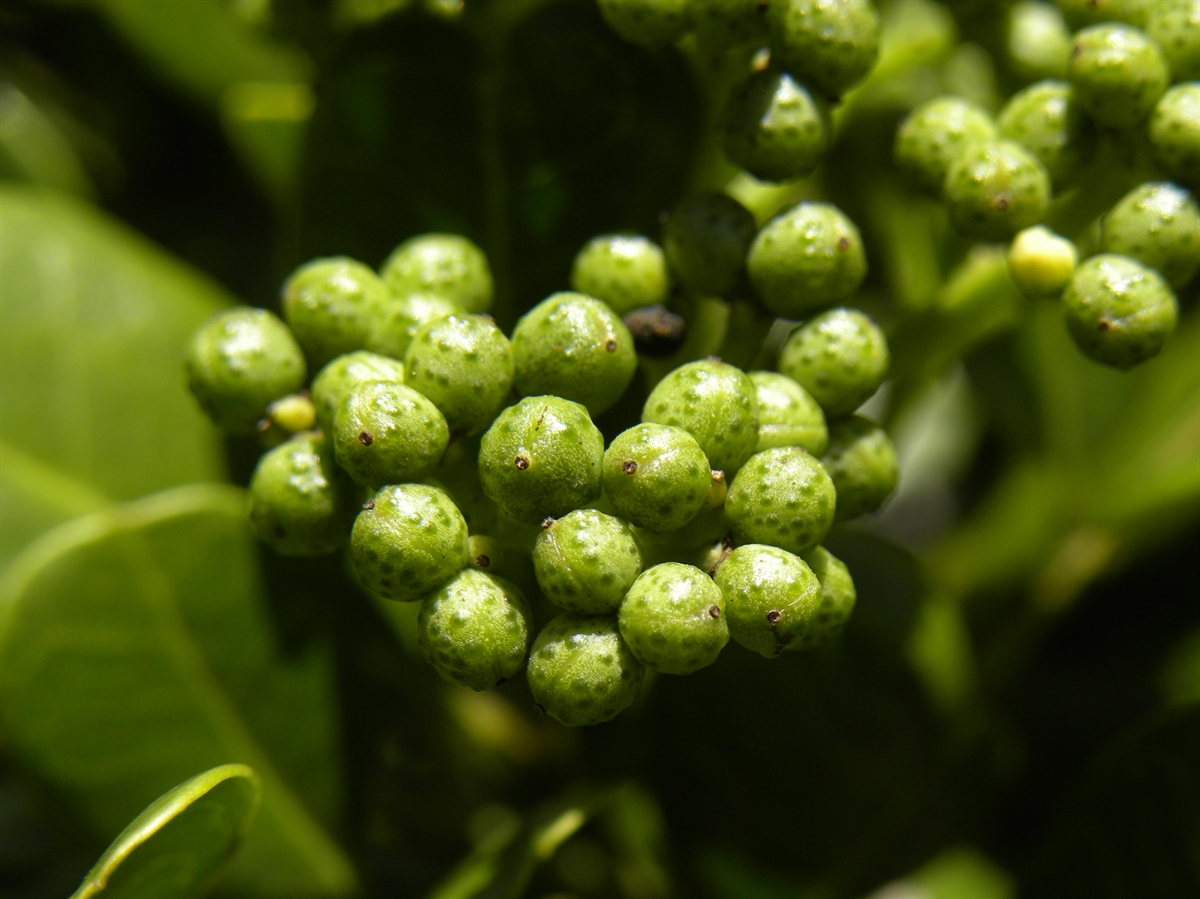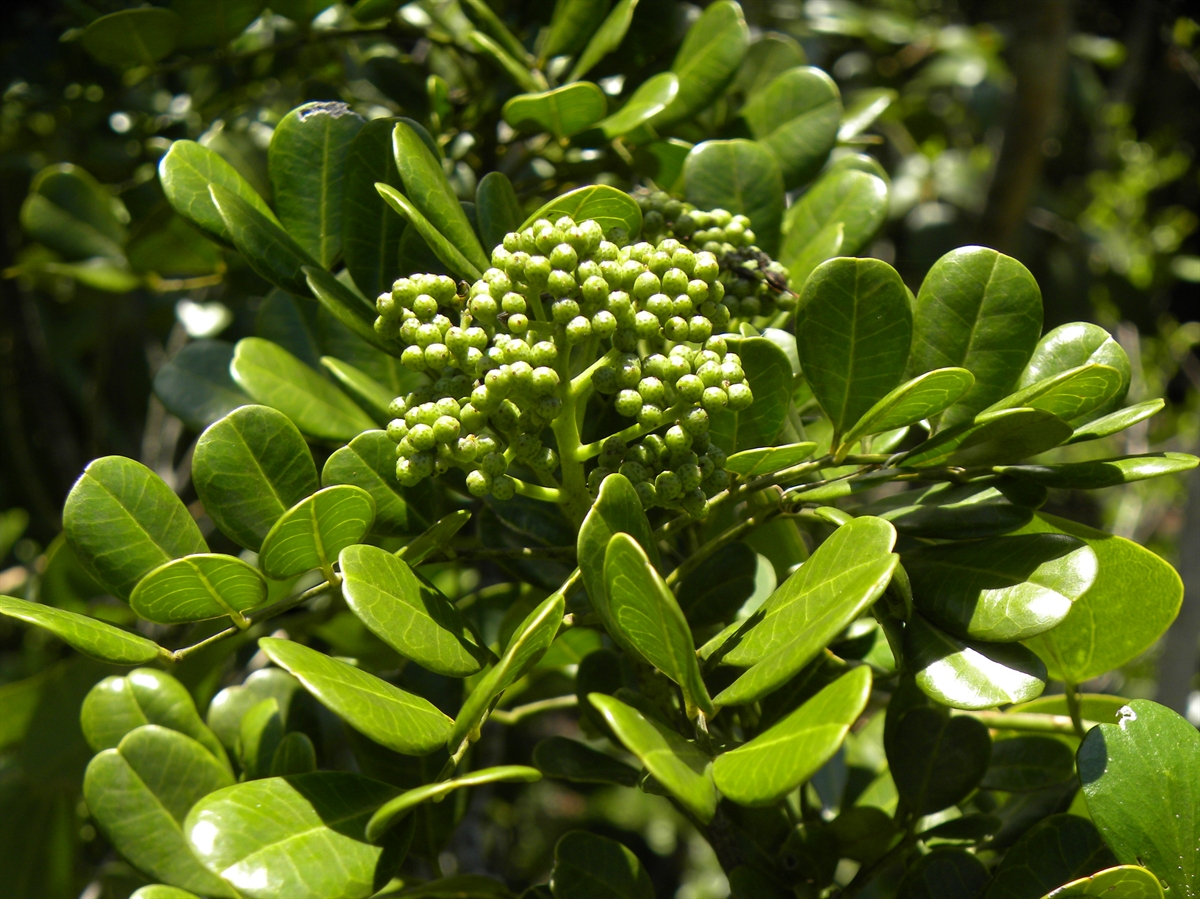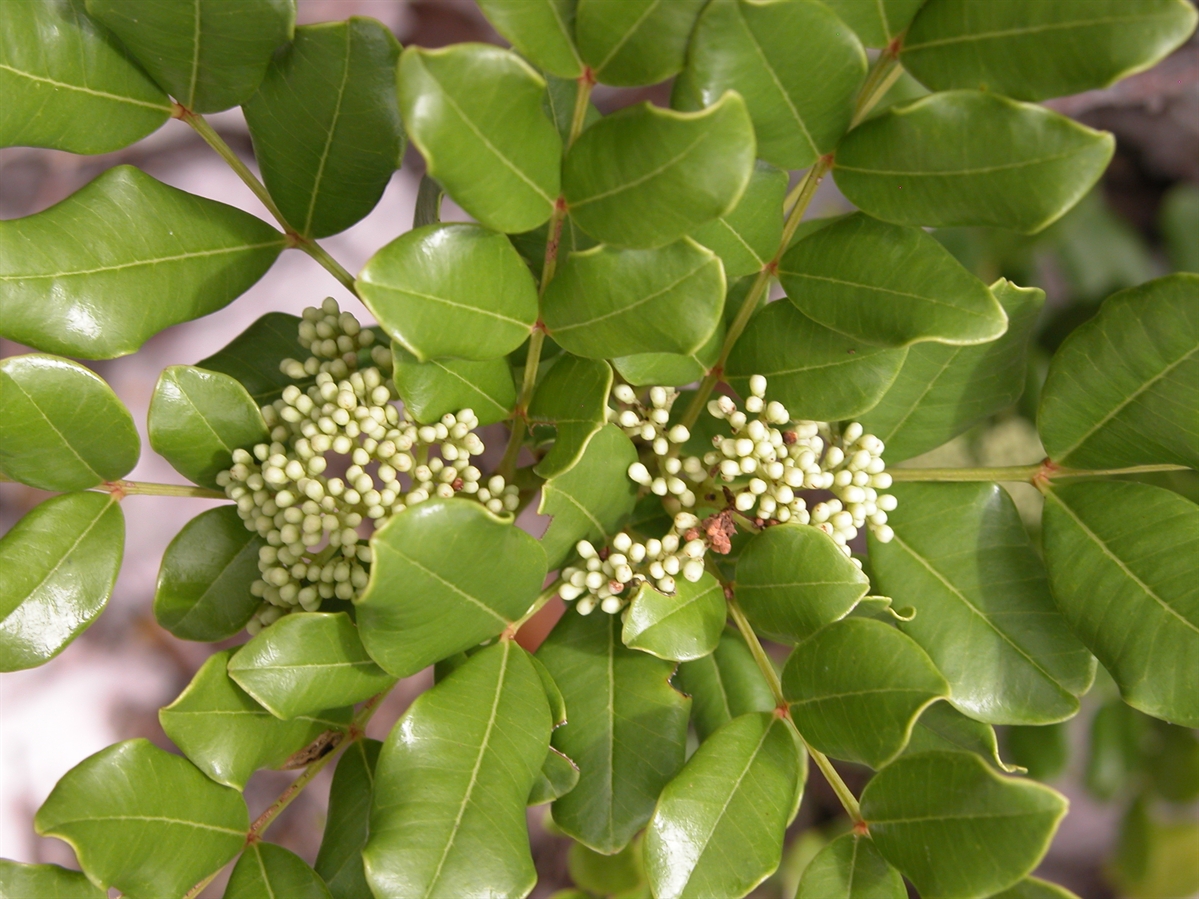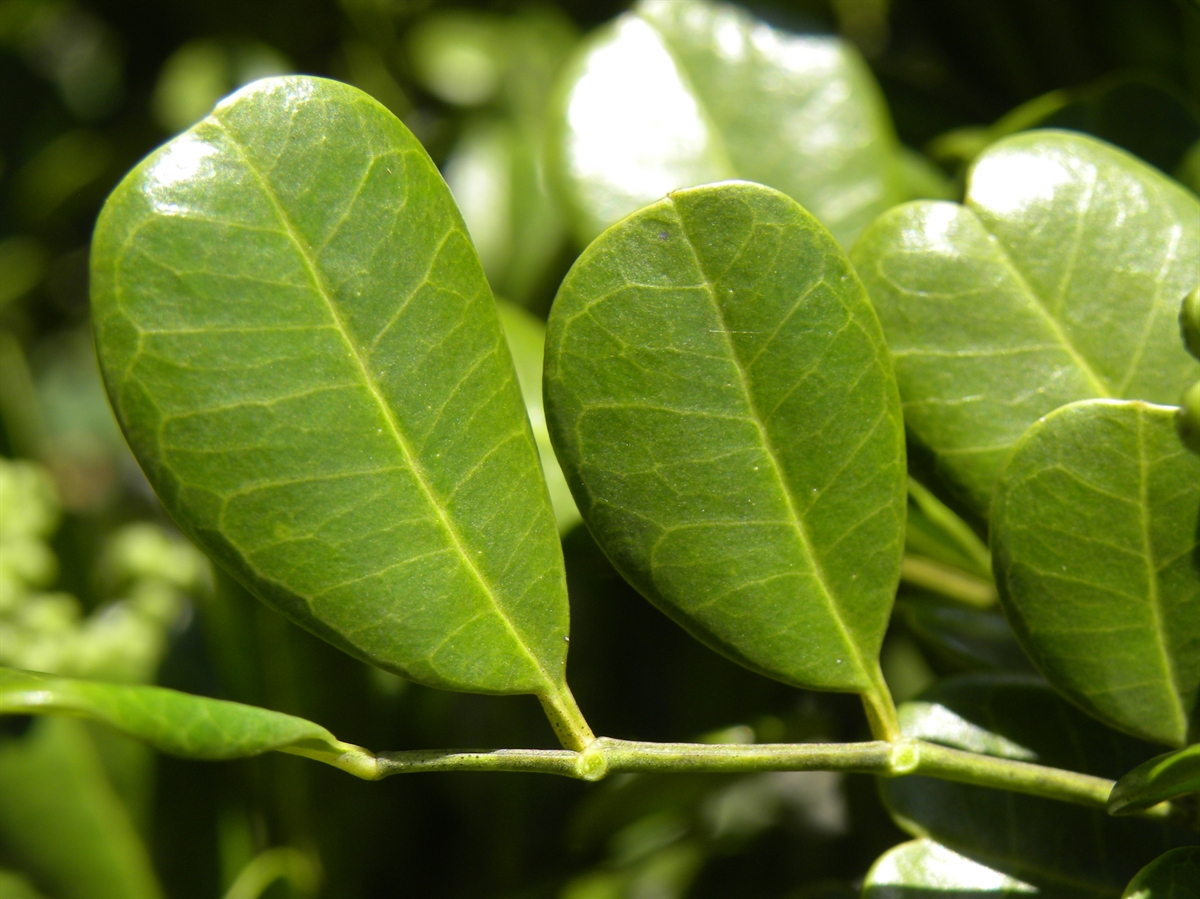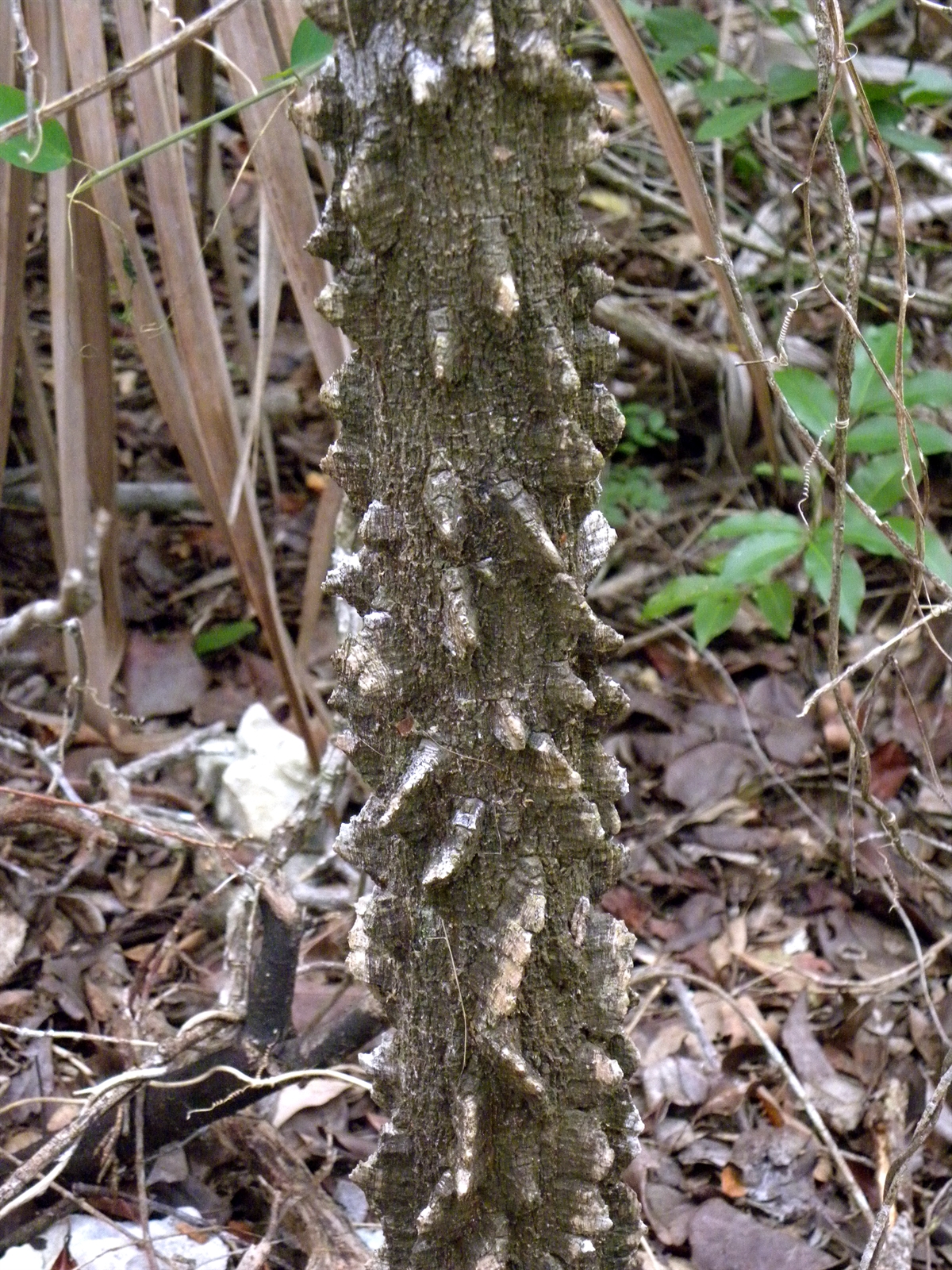Habit: Zanthoxylum coriaceum grows as a shrub to small tree up to 7 meters in height. The base of older specimens has distinctive corky conical knobs and the stems have thorns. The evenly pinnate, compound leaves are arranged alternately and are up to 25 cm in length. The 4-12 leaflets are to 7 cm in length, ovate to oblong, with an obtuse or emarginate leaf apex and entire margin. The leaflets are dark green and shiny and are aromatic when crushed.
Zanthoxylum coriaceum is dioecious. The incomplete, imperfect, actinomorphic flowers are arranged in dense terminal cymes. The calyx has 3 unfused, green sepals. The corolla has 3 unfused, greenish-white petals. Staminate flowers have 3 stamens and a non-functional ovary. Carpellate flowers have no stamens and 3 unfused superior ovaries each with1 locule and 1-3 seeds. The fruit is a follicle at maturity with black seeds.
Habitat: Zanthoxylum coriaceum grows primarily as an understory shrub (occasional tree) in Dry Broadleaf Evergreen Formation – Forest/Shrubland (coppice) in both a limestone and a sand substrate.
Distribution: Zanthoxylum coriaceum grows on all island groupings in the Lucayan Archipelago as well as Florida and the Caribbean region.
Medicinal/Cultural/Economic usage: Zanthoxylum coriaceum is not known to be used medicinally in the Lucayan Archipelago.
In Florida it is a host plant to the Schaus Swallow Tail Butterfly.
